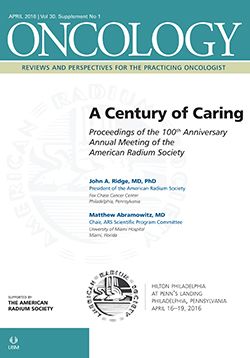(P003) Mastectomy vs Breast Conservation for Early-Stage Male Breast Cancer: A Comparison of Oncologic Outcomes
Our study suggests that breast-conserving therapy for early-stage male breast cancer yields comparable cause-specific survival rates when compared with mastectomy.
David Zaenger, MD, Bryan Rabatic, MD, PhD, Waleed Mourad, MD, PhD; Medical College of Georgia
PURPOSE: Cancer of the male breast (MBC) is a rare disease lacking data-based treatment guidelines. The majority of men undergo either modified radical mastectomy (MRM) or simple mastectomy (SM). Because of the rarity of MBC, there is a paucity of data comparing oncologic outcomes between breast-conserving therapy (BCT) and mastectomy. We compared cause-specific survival (CSS) of early-stage, node-negative MBC to determine whether BCT may be appropriate.
MATERIALS AND METHODS: We searched the Surveillance, Epidemiology, and End Results (SEER) database for men with breast cancer and refined this cohort to men with stage I/II, T1/2, N0 cancer with surgical (SEER 2003+ site-specific surgery codes) and radiation data. Patients were stratified by surgical selection: ipsilateral MRM (50–56), ipsilateral SM (40–41), or breast-conserving surgery (BCS; 20–24) with or without postoperative radiation therapy (PORT). We analyzed the actuarial 5-year cause-specific survival (CSS).
RESULTS: The database included 6,263 MBC cases and included 1,777 men with stage I/II, T1/2, node-negative disease and the required treatment information. MRM without PORT was the most common treatment (n = 765; 43%). The majority of patients (83%) received SM or MRM, while 296 (17%) underwent BCS. Of the BCS patients, 46% (n = 135) received PORT to complete traditional BCT. MRM alone had an actuarial 5-year CSS of 97.3% for stage I and 91.2% for stage II patients. No deaths were recorded in the BCT group, regardless of stage, or in the three stage I surgical groups if the men received RT, with an actuarial 5-year CSS of 100% in each BCT group.
CONCLUSIONS: Our study suggests that BCT for early-stage MBC yields comparable CSS rates when compared with mastectomy. If true, this may alter the treatment paradigm to less invasive intervention and may have the added benefit of increased functional and psychological outcomes. Further investigation is needed to confirm our conclusions.
Proceedings of the 98th Annual Meeting of the American Radium Society - americanradiumsociety.org
